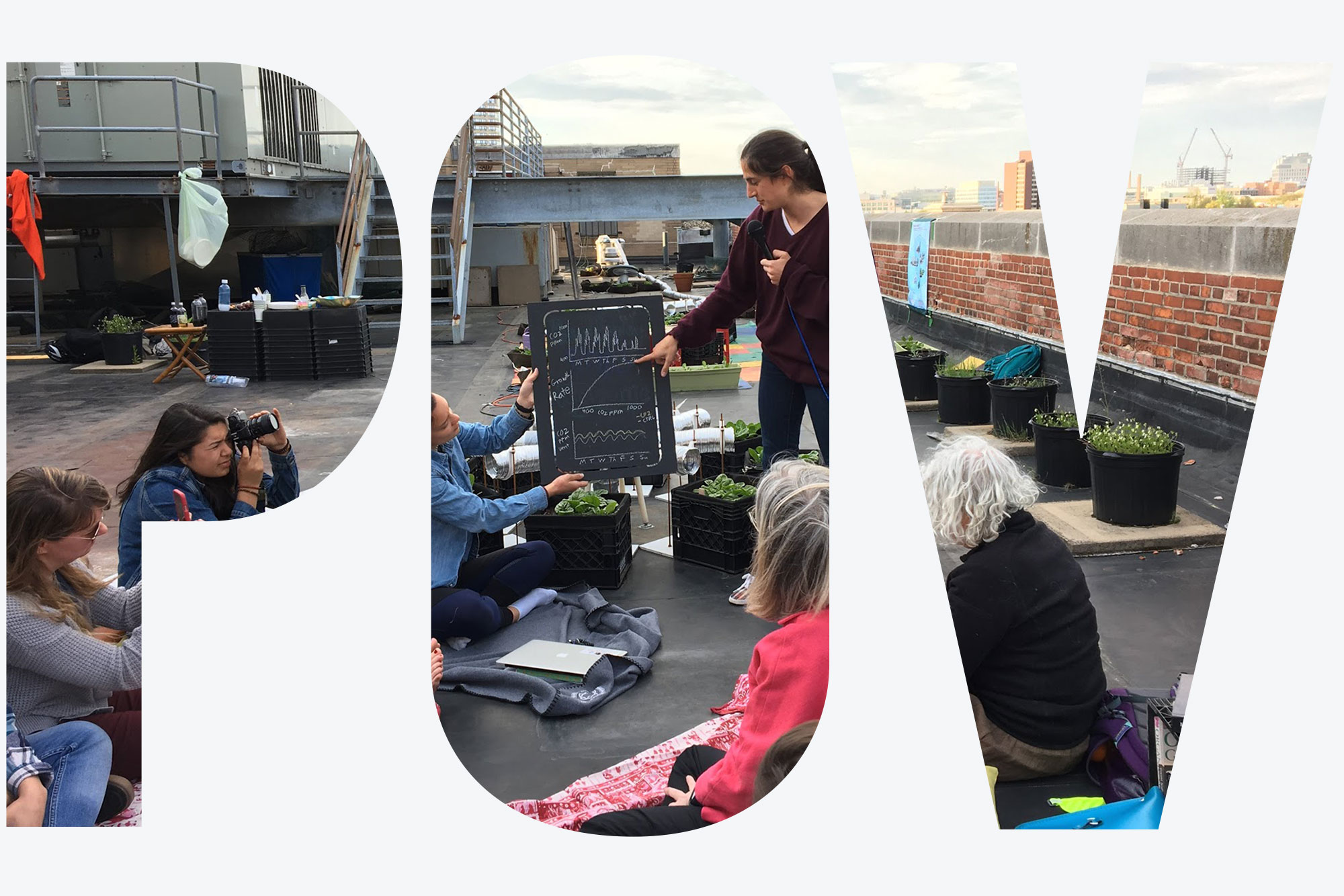POV: We Need to Take Advantage of the Many Stimulating Outdoor Learning Opportunities

Photo courtesy of Nathan Phillips
POV: We Need to Take Advantage of the Many Stimulating Outdoor Learning Opportunities
BU’s Earth House is building on the University’s legacy as an early innovator in outdoor education
“Here is the library. But the study is out of doors.” From “Walking,” an essay by Henry David Thoreau
COVID-19 has required us to rethink nearly every aspect of our everyday lives, including college education. Boston University launched Learn from Anywhere (LfA), but a place that’s been overlooked in “Anywhere” is the urban outdoors. There are safe, healthy, and stimulating outdoor learning and teaching opportunities everywhere in and around BU. We should take advantage of them.
BU and Boston were early innovators in outdoor experiential education, so we have plenty of examples and an historic legacy from which to work. In fact, our own BU faculty member Paul Hutchinson (GRS’15), a Questrom senior lecturer, wrote an entire dissertation on outdoor experiential education, including its deep roots in Boston and at BU.
The Charlesbank Playground, on the Esplanade, was the first intentional public playground in the United States, and education was integral to its vision. The namesake of BU’s Sargent College and Sargent Center for Outdoor Education, Dudley Allen Sargent, designed this playground along with Frederick Law Olmsted, the noted landscape architect responsible for New York City’s Central Park and Boston’s Emerald Necklace. The Boston Farm School, Brook Farm, Temple School, and BU’s Sargent Center for Outdoor Education, [sold in 2009 and now run by Nature’s Classroom], were all part of greater Boston’s and New England’s historic innovation of outdoor education.
We’re leveraging this legacy this fall at Earth House, BU’s Living Learning Community dedicated to sustainable lifestyles and systems. Living Learning Communities at BU are ones in which curriculum is explicitly tied to the residential experience. In its first five years as a living learning community, Earth House has used the four-story South Campus row house on Buswell Street as the object of inquiry into environmental, economic, and social sustainability. This fall, out of the necessity to de-densify indoor spaces, we’re turning Earth House “inside out,” stepping outside of this living residential classroom to examine the natural and human systems that support it and in which it is embedded.
What does outdoor experiential college education look like in the 21st century? At Earth House, instructors and students are together finding out this fall, appropriately learning experientially. Consistent with Learn from Anywhere, students may join our instructor team outside, masked and safely distanced, for walking tours of exploration and investigation, studying everything from street trees and the ecohydrology of the Muddy River to tracing the municipal water pipes, catch basins, gas pipes, and electric wires that service Earth House and all of Boston.
Being outdoors doesn’t mean abandoning technology; rather, it’s about using tools appropriately. So in addition to mobile devices and earbuds that may help us communicate at times over the din of urban life, we’ll employ decidedly low-tech but useful tools such as sweaters and rain gear, comfortable walking shoes, camp stools, and maybe even Bluebikes. Outdoor education must be inclusive: we will only visit places that are accessible to all. To facilitate inevitable professorial hand-waving, I’ve purchased a neck-mounted selfie stick so I can stream outdoor walking tours hands-free to students who choose to learn from inside Earth House or around the world.
Ironically, out of necessity the pandemic has motivated me more than ever as a teacher “in” Earth House to look upon it from the outside and value its place in Boston. In reading about the history and philosophy of outdoor experiential education, it is apparent that the 19th- and 20th-century conceptions of the “outdoors” could use some updating for the 21st century. Wilderness used to be viewed as external, even in the city, so educators would strive to create and segregate nature from the built environment. And that has produced great urban wilds and green spaces, such as the Charlesbank Playground, Franklin Park, and the Back Bay Fens. Today, we see neighborhoods as vibrant, diverse human ecosystems, as worthy of interest and engagement and inextricably woven together with nature; whether in strolling along residential or commercial streets, we’ll appreciate anew that every street tree is wilderness in the city; that the clouds and sky are direct connections to endlessly varying nature and our global commons; that repurposed streets, the BU Beach, and even parking lots are also nature’s classroom spaces, offering us safe, outstanding opportunities to learn.
Nathan Phillips is a College of Arts & Sciences professor of earth and environment; he can be reached at nathan@bu.edu.
Comments & Discussion
Boston University moderates comments to facilitate an informed, substantive, civil conversation. Abusive, profane, self-promotional, misleading, incoherent or off-topic comments will be rejected. Moderators are staffed during regular business hours (EST) and can only accept comments written in English. Statistics or facts must include a citation or a link to the citation.